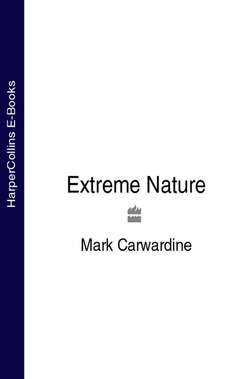Читать книгу Extreme Nature - Mark Carwardine - Страница 27
Best architect
Оглавление| NAME | African termite Macrotermes bellicosus |
| LOCATION | sub-Saharan Africa |
| ABILITY | creating an air-conditioned, multi-storey communal residence |
© John Shaw/NHPA
Some 200 species of ant – most famously leafcutter ants – farm fungus inside their nests as a source of fast food. So do about 3,500 beetles and 330 species of termite. But of all these insects, none seems to cultivate a more difficult crop than the African termite, and no crop requires more elaborate technology to maintain it. The staple fungus of African termites grows only on their faeces and needs a very particular temperature. Anything above or below 30.1°C (86°F) is too hot or too cold, and every aspect of the construction of the termite mound is part of an effort to keep the temperature exactly that.
The termites always build with mud, above a damp pit. They dig at least two long boreholes down to the water table. They also construct a 3m (10ft) diameter cellar, about 1m (3.3ft) deep, with a thick central pillar that supports the main part of the mound. This houses the queen, the nursery and the fungus farms. On the ceiling of the cellar are thin, circular condensation veins, and around the sides of the mound are ventilation ducts. On top are hollow towers – chimneys – that rise 6m (20ft) above ground level. Every dimension is just right for the precise circulation of air and moisture that will keep the fungus at 30.1°C no matter what it’s like outside. What’s more, workers are only a maximum of 2cm (0.8in) in size, and so in relative terms, the mound is taller than any human building – the equivalent of 180 storeys.
